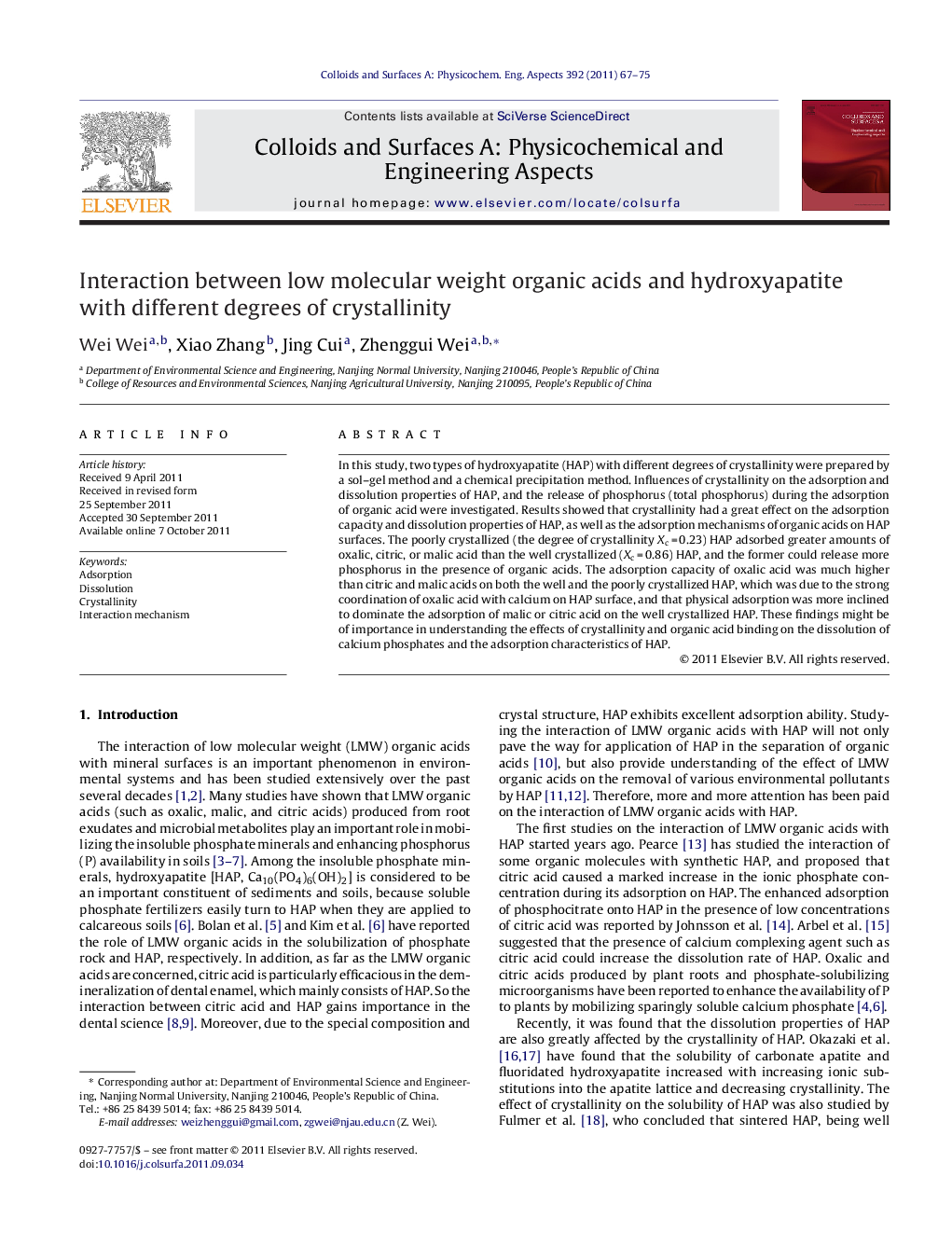| Article ID | Journal | Published Year | Pages | File Type |
|---|---|---|---|---|
| 594375 | Colloids and Surfaces A: Physicochemical and Engineering Aspects | 2011 | 9 Pages |
In this study, two types of hydroxyapatite (HAP) with different degrees of crystallinity were prepared by a sol–gel method and a chemical precipitation method. Influences of crystallinity on the adsorption and dissolution properties of HAP, and the release of phosphorus (total phosphorus) during the adsorption of organic acid were investigated. Results showed that crystallinity had a great effect on the adsorption capacity and dissolution properties of HAP, as well as the adsorption mechanisms of organic acids on HAP surfaces. The poorly crystallized (the degree of crystallinity Xc = 0.23) HAP adsorbed greater amounts of oxalic, citric, or malic acid than the well crystallized (Xc = 0.86) HAP, and the former could release more phosphorus in the presence of organic acids. The adsorption capacity of oxalic acid was much higher than citric and malic acids on both the well and the poorly crystallized HAP, which was due to the strong coordination of oxalic acid with calcium on HAP surface, and that physical adsorption was more inclined to dominate the adsorption of malic or citric acid on the well crystallized HAP. These findings might be of importance in understanding the effects of crystallinity and organic acid binding on the dissolution of calcium phosphates and the adsorption characteristics of HAP.
Graphical abstractTEM micrographs of the synthetic HAP with different degrees of crystallinity.Figure optionsDownload full-size imageDownload as PowerPoint slideHighlights► Interaction of LMW organic acids with HAP was studied at 25 °C. ► The decreased crystallinity could enhance adsorption of LMW organic acids by HAP. ► Oxalic acid was adsorbed by HAP through coordination with calcium on HAP surface.
